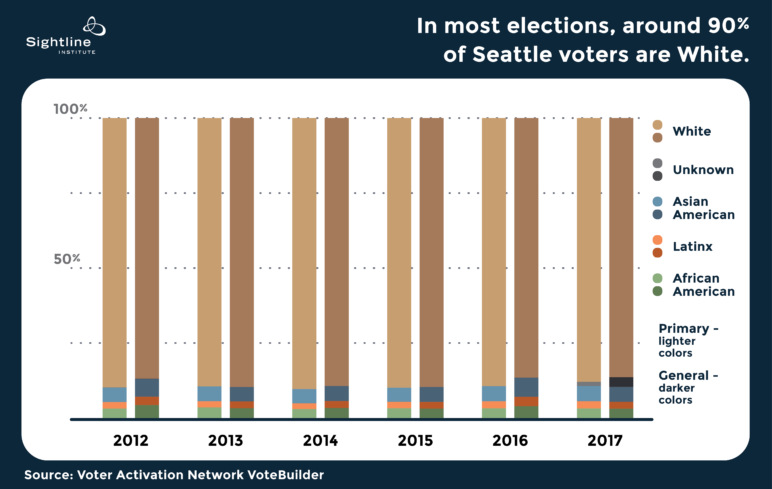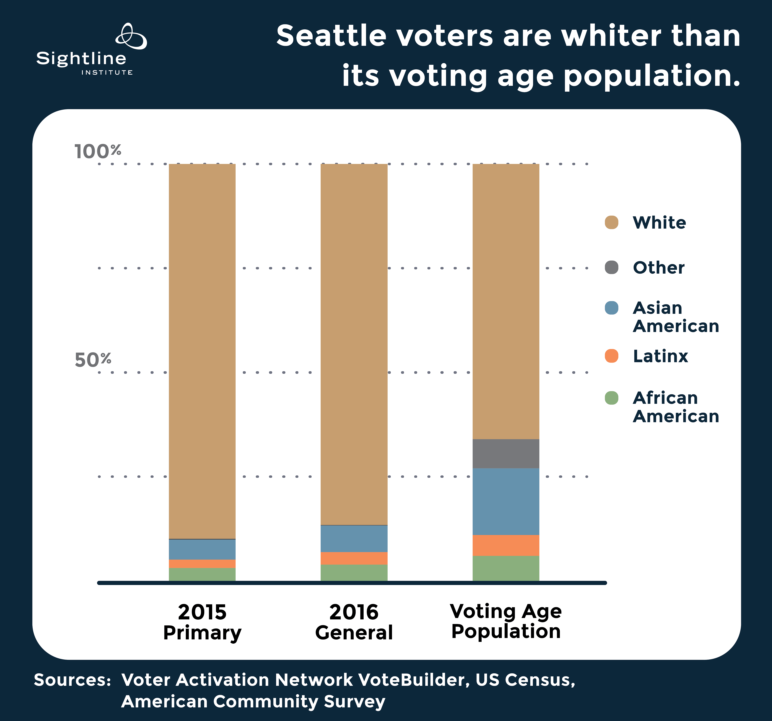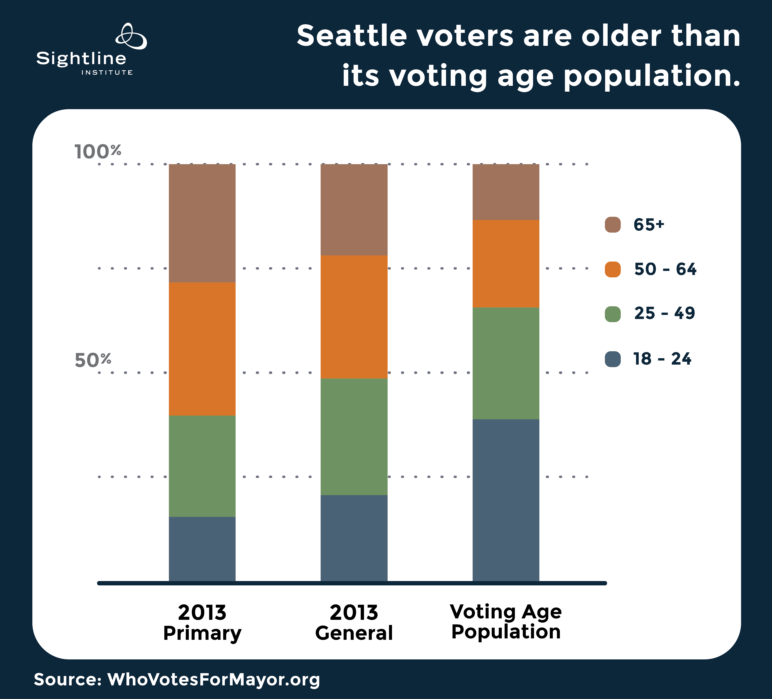Last week we showed that, by holding city elections in low-turnout odd-years, Seattle disproportionately disenfranchises people of color in Seattle. But zooming out, the data shows voters in every election are older and whiter than Seattle’s voting age population. People of color and younger people are not having their fair say in elections. This could be because people of color and younger people are in the minority, and those in the minority often get zero representation in the current winner-take-all voting system. When voters in the minority see that their voice can be heard, for example in a proportionally elected city council, they are more likely to participate. To encourage all citizens to vote, Seattle could switch to a system like proportional representation that makes it more likely their votes will matter, even if they are in the minority like young people and people of color.
Seattle voters are overwhelmingly White in every election
The graph below shows that in most elections, only around 10 percent of Seattle voters are African American, Asian American, or Latinx, and their share of voters bumps up to about 13 percent during presidential year general elections.

People of color are punching below their electoral weight in Seattle
According to Census and American Community Survey data, African Americans, Latinxs, and Asian Americans together make up about 27 percent of Seattle’s voting age population. On the one hand the census might undercount people of color so their percentage is actually higher, but on the other hand some of those adults might not be registered or eligible to vote. Either way, people of color make up more than 25 percent of voting age adults in Seattle but only 10 percent of voters in primaries and odd-year city elections and only about 13 percent of voters in presidential-year general elections. They are not getting their fair share of say in elections. Possibly because they don’t think voting would get them their fair say in the current winner-take-all system.

Younger people are punching below their electoral weight in Seattle
Younger voters in Seattle are also not getting their fair voice in elections. Seattle’s voting age population is relatively young—nearly 40 percent are under 35 and only 13 percent are older than 65. But primary voters are old—most are 50 and older, and more than one-quarter are 65 and older. Odd-year general election voters, the voters that choose the city’s leadership, aren’t much younger—half are over 50 and only 21 percent are under 35.

Younger people and people of color have less say in Seattle elections
In Seattle, as in most places in Cascadia, younger people and people of color are punching below their weight in elections. Other US cities’ experiences with semi-proportional voting suggest that people of color come out to vote in greater numbers when they feel the electoral system gives them a fair shot at representation. To give all residents an equal say in who runs city hall, Seattle could switch to a proportional representation electoral method that would ensure more voters have more say in who gets elected.
Notes on Methodology
The race and ethnicity data comes from the Voter Activation Network VoteBuilder database which uses first, middle, and last name as well as the demographics of the precinct to estimate each voters’ race and ethnicity. The database might under-identify people of color if they have names that are commonly White. It could be that more voters are people of color than the database identifies.


Comments are closed.